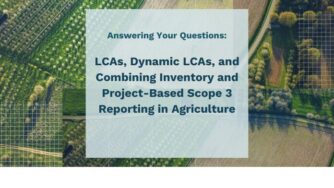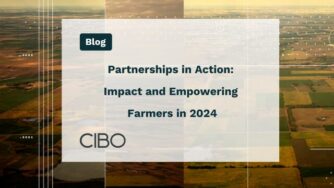Corn is one of the most important crops in the world, and it plays a crucial role in global food security. Understanding how corn plants grow and develop is essential for maximizing yield and ensuring that we can meet the growing demand for corn for food, feed, fuel and fiber.
One important aspect of corn growth is phenology. This refers to the timing of plant development and the various stages that the plant goes through as it grows. The phenological stages of corn include germination, emergence, leaf development, tasseling, silking, grain filling, and maturity. Many of these stages are ones that CIBO Impact can detect remotely with our satellite-based computer vision and machine learning systems. Detection and validation of these phenology stages is important because the timing of each stage has a significant impact on the final yield of the crop. For instance, if the crop experiences stress during critical stages like tasseling and silking, it can lead to reduced grain production and lower yields. Detecting the planting date and emergence dates from space allows CIBO to count down the days to critical phenological stages while allowing for variations in weather, soil conditions and farming practices.
One way to optimize corn yield and generate reliable, in-season predictions on yield is to carefully manage the timing of planting and growth of the crop. Planting at the right time helps ensure that the crop reaches critical stages at the optimal time which maximize yield potential. Additionally, proper management of nutrients, water, and pests help ensure the crop stays healthy.
While farmers know best when to plant, care for and harvest on their fields, people and organizations serving those farmers are challenged to understand the big picture of how crops are coming along across their supply sheds. CIBO’s remote sensing and crop modeling see and model crop phenology at scale and deliver instant and accurate insights based on phenology as well as weather, soil conditions, and farming practices. This allows both farmers, agronomists, and program sponsoring organizations to have the best information about and validation of practices, likely yields, and verified carbon sequestration / intensity impacts.
By understanding the link between crop phenology and yield, enterprises, organizations, and growers can work together to meet the demand for food system security, reducing greenhouse gas emissions, and supplying us with the food, feed, fuel, and fiber we rely upon.
If you’re interested in more about how phenology impacts yield, food system security, and carbon footprint, our paper will be of interest to you.
How important is phenology for yield and what are the main factors influencing it? This whitepaper attempts to answer these questions and demonstrate how CIBO’s data-driven simulation tool takes the characteristics of the crop and its environment into account to estimate the timing of key growth stages.
Download the Whitepaper



